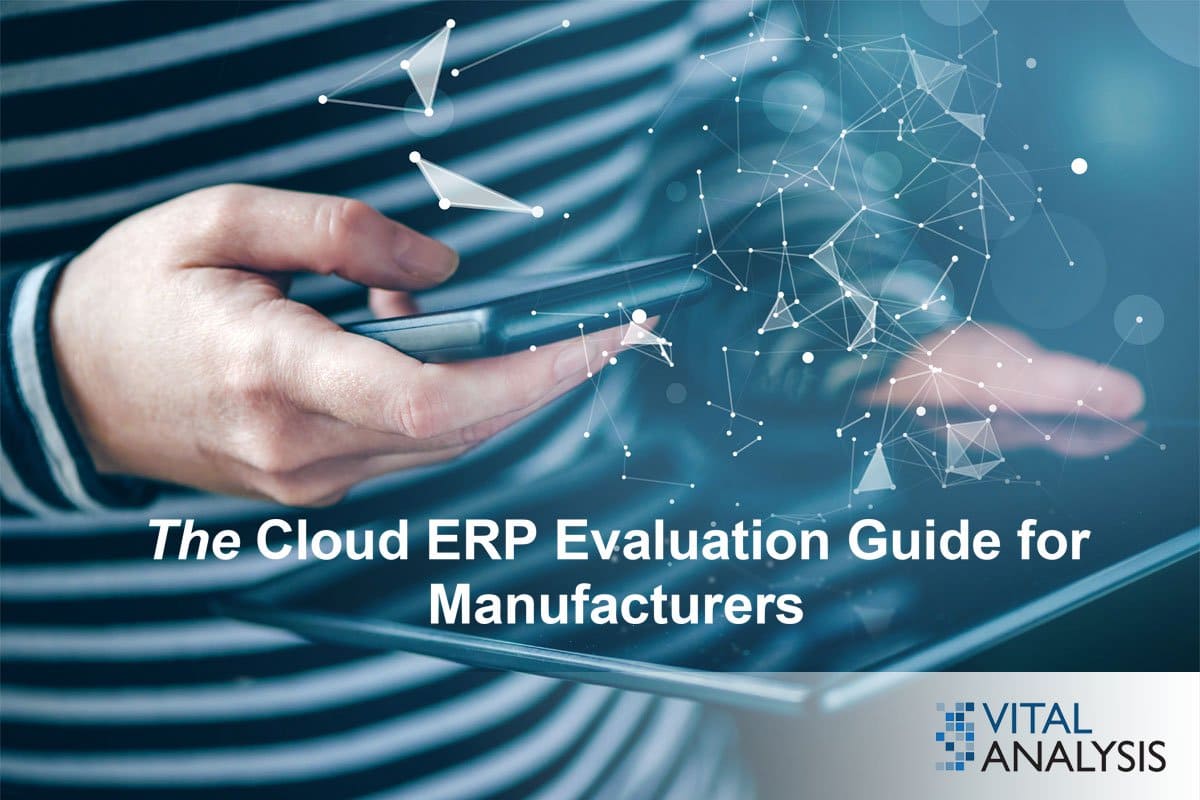Are You Ready to Replace Your Old ERP System?
If you’re thinking about replacing your old ERP system (and if it’s more than a few years old, you should be thinking about it!), you face a lot of important questions. For instance…
– How can you be sure it’s time to act?
– What capabilities should your new ERP solution entail?
– How should you go about choosing the best solution for your needs?
Excerpts from Vital Analysis Paper
In a new paper from Vital Analysis, you’ll find a lot of detailed answers to these questions, and others. Here are a few samples of the insights and guidance you’ll find when you review the complete paper.
Start by taking a walk around your shop floor. In-plant tours conducted by Vital Analysis revealed new technology – 3-D printers, robotic welders, and more – is widespread, while the underlying ERP systems are years old, sometimes decades old.
When your ERP system is no longer up to the task, you can see the symptoms throughout your business. Be on the lookout for signs like these:
- Whiteboards, paper-based message boards, etc. throughout the production floor
- Magnetic status markers to indicate the production status of some subassemblies
- An inability to calculate cost accounting values until well after the end of the month
- A large finance staff that is continuously building, updating and maintaining hundreds or thousands of massive (and error-prone) spreadsheets
- Pressure is growing to provide customers with up-to-date production status and production cost information
- The effort to provide that info on a timely basis is growing, too
- You can’t bid some projects because the information requested by a potential customer cannot be provided easily in the current environment, if at all
- Your Board of Directors demands a “factory of the future” or “Industry 4.0” initiative, but your overtaxed staff and maxed out facilities can’t deliver
The speed with which new innovations are appearing is accelerating, creating new reasons to update your ERP system. Software obsolescence is not a new thing. You’ve had to deal with factors like aging hardware, functional obsolescence, and lack of vendor support before. But the waves of innovation that you’re seeing in manufacturing today – the rise of IoT, big data, and predictive analytics; personalization; servitization; new business models – are creating new reasons to revisit your core technology.
Your decision to implement a new ERP system has to be multi-dimensional. Vital Analysis suggests six considerations to include:
- Plan for the manufacturing world, technology and competition that’s coming. Use the past – or even the current state – and you’ll be behind from the start
- Seek big changes (not incremental improvements) in how work is completed so a material boost in productivity is possible and the business case is undeniable
- Identify strategic activities IT should focus on (e.g., bringing VR headsets to maintenance applications) and tactical activities it should not (e.g., application software maintenance)
- Get as much capability as possible from a single vendor or platform ecosystem
- Assess whether or not your firm currently possesses the skills and capabilities to succeed with this change
- If you don’t, then find partners who can backfill your skills gaps and deliver these new solutions on-time and under budget
For more answers and ideas, read the full report from Vital Analysis. You’ll find a free copy here.







